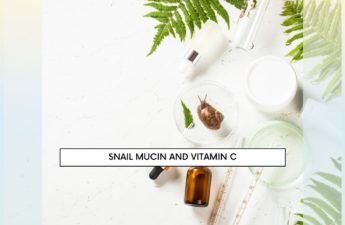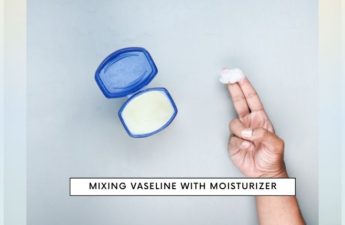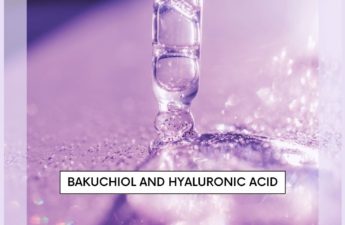While researching skin care products to improve your skincare routine, you’ve probably come across Niacinamide. This powerful skincare ingredient comes in different concentrations and blends, some being more effective than others. Knowing which concentration to choose and how to use Niacinamide is essential for achieving the best skincare results.
Both 5% and 10% Niacinamide serum contain Niacinamide, a form of vitamin B3. The difference between the two is the concentration of the active ingredient — higher percentages contain more Niacinamide. Most dermatologists recommend starting with a low concentration to avoid skin irritation.
This article discusses the differences between 5% and 10% Niacinamide serum, which concentration you should use, and how to dilute serums with higher concentrations. Additionally, it covers the many benefits that come along with using Niacinamide and which products pair best with the supplement. Read on to learn more.
What Is the Difference Between 5% and 10% Niacinamide Serum?
The difference between 5% and 10% Niacinamide is that 10% formulas contain more Niacinamide than lower percentages. However, higher concentrations also mean it could lead to skin irritation. Most dermatologists only recommend 5% of Niacinamide serum for daily use. Higher concentration does not guarantee a better result on your skin too. Always pick a product that works for your skin. We’ve listed more details in this article. Keep scrolling to read.
What Niacinamide Concentration Should I Use?
There are different concentrations of Niacinamide available, including:
- 2% Niacinamide
- 5% Niacinamide
- 10% Niacinamide
It’s uncommon to come across concentrations higher than 10% or lower than 2%, although they do exist. Most commercially available formulations come in 2, 5, or 10% concentrations. These three concentrations are designed for twice-daily topical application. However, it’s best to start low and work your way up to higher concentrations.
Start with the lowest concentration of Niacinamide (2%), and gradually increase the amount until you reach 5% concentration. Most dermatologists agree that 5% Niacinamide is the ideal concentration for achieving desired skincare results. Concentrations of 10% or higher may lead to skin irritation.
Those with sensitive skin are more susceptible to experiencing redness, added inflammation, and irritation when using higher concentrations of Niacinamide.
We’ll discuss how to dilute Niacinamide later in this article to make it easier for you to gradually increase the concentration over time.
Niacinamide Results By Concentration
Purchasing a Niacinamide serum is easier when you know how different concentrations affect the skin and how long it’ll take to see results. Keep in mind, however, that if your skin condition, acne, or inflammation is particularly severe, it may take slightly longer to see results.
Let’s look at some potential results for different concentrations of Niacinamide serums.
Less than 2% Niacinamide Serum: Result
Niacinamide serums containing a concentration of 2% or less may take two to four weeks to see noticeable results. Some users may notice less oil, tighter skin, and smaller pores. While results differ between users and skin types, most people can expect to see some kind of positive results within four weeks of using a 2% (or lower) concentration.
5% Niacinamide Serum: Result
This is the ideal concentration of Niacinamide for most people. Serums containing a concentration of 5% Niacinamide typically show results sooner than a 2% Niacinamide serum due to the higher concentration. Users note reduced blemishes, sunspots, and wrinkles after a few weeks of regular use.
10% Niacinamide Serum: Result
Some experts may recommend or prescribe 10% Niacinamide serums to those with skin conditions such as:
- Eczema
- Acne
- Redness
- Inflammation.
Some of these skin conditions respond well to higher concentrations of Niacinamide, and many people boast results after one month of use. Those with sensitive skin may find 10% Niacinamide to cause additional irritation and inflammation.

Is Higher Concentration Better?
Although some dermatologists recommend higher concentrations of Niacinamide for certain skin conditions, it’s not generally recommended to go above 5%.
Higher concentrations of Niacinamide are not necessarily better. Generally, experts recommend 5% concentrations for best results. Those with severe inflammation or other skin conditions may benefit from higher concentrations, but people should only use these under the guidance of a dermatologist.
If you find that 5% Niacinamide serum hasn’t improved your skin after four weeks of use, reach out to a professional and have your skin diagnosed. In some cases, you may require other ingredients to treat or cure your skin issues.
Can You Dilute Niacinamide?
While experts agree that Niacinamide provides multiple skincare benefits, sometimes 5% or 10% concentrations are too much for some users. As a result, many prefer diluting the product prior to topical application.
Starting with a 2% concentration is ideal, as it allows you to test the skin for adverse reactions. If you find that your skin benefits from a 2% concentration, you may gradually increase the amount of Niacinamide over time.
You can dilute Niacinamide using a facial moisturizer or oil (that does not already contain Niacinamide). Use three parts moisturizer or oil to one part 10% Niacinamide serum. Increase the concentration weekly by using a 2:1 ratio (two parts moisturizer or oil to one part 10% Niacinamide serum).
In the next section, we’ll discuss some of the best ingredients to pair with Niacinamide for dilution (or achieving better skincare results overall).
Related article: How to Dilute Niacinamide Serum
Ingredients That Pair Well with Niacinamide
Niacinamide doesn’t always contain a moisturizing serum as an additive. Fortunately, you can blend Niacinamide with other ingredients to aid in skin health and achieve great results.
When combined with other beneficial ingredients, Niacinamide doesn’t react in a negative way — it remains neutral, allowing you to pair it with a number of other ingredients to create a powerful skin blend.
Below are a few ingredients that work well with Niacinamide to reduce redness, heal blemishes, and improve the overall health of the skin:
- Hyaluronic Acid. Found naturally in the body, this moisturizing ingredient helps reduce swelling when applied topically to the skin. Hyaluronic acid helps the skin hold onto moisture, creating a more supple, radiant appearance.
- Salicylic Acid. Applying salicylic acid to the skin removes dead skin cells to promote the growth of new, healthy skin. Additionally, it shrinks pimples and blemishes and unblocks clogged pores.
- Retinol. This ingredient is found in many different skin creams and serums. It reduces the appearance of fine lines and wrinkles and helps even out discoloration. With regular use, it may enhance the color of the skin and soften the overall texture.
- Cica. Cica is short for “Centella Asiatica,” a herb native to Africa and parts of Asia. It reduces inflammation, speeds up wound healing, and soothes the skin. It’s a great additive for skin conditions, such as eczema or psoriasis.

The Benefits of Niacinamide
The word “niacinamide” may sound intimidating, but it’s just short for topical soluble B3. It’s essentially a critical vitamin found in many foods. Through extensive testing and medical studies, Niacinamide proves itself time and time again as a beneficial skincare ingredient.
By eating foods high in B3 vitamins, you can receive the nutrients that you need to obtain flawless skin. However, not everyone receives the correct amount of B3 through food alone — and sometimes, a topical supplement helps to assist skin and aid in the reduction of redness, inflammation, and acne.
The other skincare benefits of Niacinamide include:
- Minimizes blemishes that are visible on the skin. Niacinamide is popular due to its ability to reduce redness, sunspots, and inflammation.
- Minimizes pore appearance and improves the appearance of skin. Over a period of four weeks, many people notice a reduction in oil production, leading to fewer breakouts. Wrinkles show improvement as well.
- Mends acne, eczema, and other skin issues. Those suffering from acne, eczema, or extreme skin redness may find that Niacinamide reduces inflammation, thus improving the appearance of their skin.
- Protects the skin from oxidative stress and rejuvenates the skin. Since it helps with oxidative stress, the skin may appear brighter, tighter, and more radiant, with an overall improvement in skin texture.
Final Thoughts
Niacinamide is a popular skincare ingredient, and for good reason. It has the ability to reduce inflammation, redness, and treat common skin conditions, and when combined with other anti-inflammatory ingredients, it can radically improve the appearance of the skin.
However, when using Niacinamide, it’s important to choose the right concentration for your skin. Higher concentrations may exacerbate current skin issues or conditions, leading to redness and additional inflammation.
If you use Niacinamide wisely, it could easily become one of your favorite skincare ingredients.
Sources
- The Skincare Edit: How To Use Niacinamide
- US National Library of Medicine – PubMed: The Effect of 2% Niacinamide on Facial Sebum Production
- Harvard Health Publishing: The Hype on Hyaluronic Acid
- Florida State University: Molecular Expressions – Niacinamide Time Lapse Sequences
- US National Library of Medicine – PubMed: How Much Do We Really Know About Our Favorite Cosmeceutical Ingredients?
- US National Library of Medicine – Medline Plus: Salicylic Acid Topical
- Ogle School – Skin, Hair, Nails: Vitamins and Minerals That Provide Top-of-the-Line Skincare
- Healthline: Everything You Should Know About Niacinamide
- YouTube: Dr Dray – TOP 3 MYTHS ABOUT NIACINAMIDE
- YouTube: Dr Dray – PAULA’S CHOICE 20% NIACINAMIDE TREATMENT REVIEW





